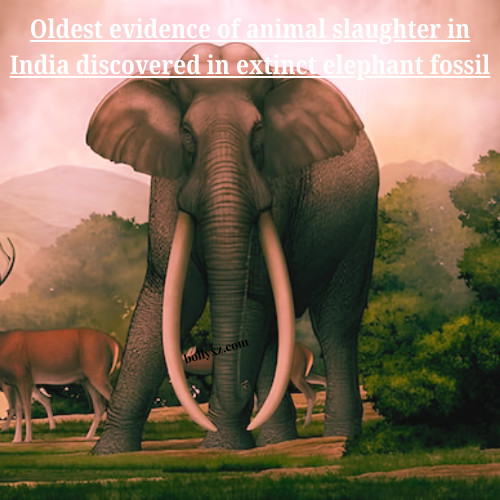The fossils were first discovered in 2000 near Pampore in the Kashmir Valley, but their significance remains in doubt until now.
A well-known study shows that early humans pounded bones to extract marrow
This discovery recovers the oldest known evidence of slaughter in India Of Elephant Fossil
In a groundbreaking discovery, researchers have unearthed the oldest evidence of animal slaughter in India, dating back to between 300,000 and 400,000 years ago.
This newly found information is related to two studies that help explain early human activities within the region and inform us about an extinct elephant species.
The fossils were unearthed in 2000 near Pampore, Kashmir Valley, but the significance of the finds remains questionable to this day.
A team led by Advait Jukar, curator at the Florida Museum of Natural History, has found that the remains belong to at least three ancient elephants of the genus Palaeoloxodon, which were more than twice the size of modern African elephants.
Elephant bone flakes were found at the site, leading the researchers to believe that early humans pounded the bones to extract the marrow. It drags back into time the earliest butchered evidence in India by nearly 290,000 years.
In association with elephant remains were discovered 87 tools made of stones, which may have been used for marrow extraction. These tools, made of basalt not found in the area, imply that early humans transported raw materials to the site to make tools.
The most complete skull belongs to an adult male of Palaeoloxodon turkmenicus, an unprecedented species previously known only from a partial skull fragment found in Turkmenistan. This specimen provides important information about the evolution and migration of the genus Palaeoloxodon.
Although the evidence honestly suggests human exploitation of the elephant carcasses, there are no signs or symptoms of hunting. The elephants could also have died naturally, likely weakened by persistent sinus infections evidenced in the remains of their skulls.
Such evidence will not only shed light on early human behavior but also provide knowledge about elephant evolution in South Asia. In Jukar’s words, “the specimen could help paleontologists fill in the story of how the genus migrated and developed”.
The results point out that there is a need for more extensive studies in this area. Jukar mentions that further digs should concentrate on collecting all bone remnants and not merely the intact specimens, as these might give more clues about early human activity.

